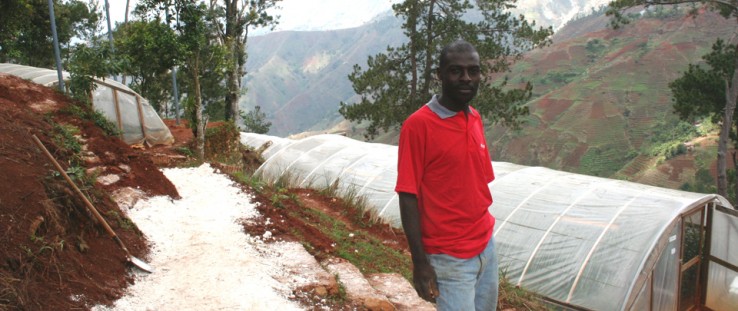 Michel Dorlean stands in front of his flower growers’ association’s greenhouses in Furcy.
Feed the Future West
View More Photos
Michel Dorlean stands in front of his flower growers’ association’s greenhouses in Furcy.
Feed the Future West
View More Photos
 Michel Dorlean stands in front of his flower growers’ association’s greenhouses in Furcy.
Feed the Future West
View More Photos
Michel Dorlean stands in front of his flower growers’ association’s greenhouses in Furcy.
Feed the Future West
View More Photos
FURCY, Haiti—A new method for growing crops in Haiti is starting to take root. A “greenhouse revolution,” introduced by USAID, is bearing exceptional harvests, increasing incomes and countering environmental degradation.
The use of greenhouses is a common practice in many countries but unknown in Haiti until recently. Participating farmers, who previously were ready to abandon their increasingly challenging trade, are producing larger yields and are trading their produce more efficiently and for higher profits. That bounty includes lettuce, broccoli, peppers, tomatoes, leeks, beets, carrots, strawberries and flowers such as chrysanthemums and gladioli. These are now sold locally to supermarkets, hotels, restaurants and farmers markets.
About 60 percent of Haitians depend on agriculture for their income. But making ends meet is difficult and, until recently, agricultural productivity has systematically declined over the last three decades. The January 2010 earthquake prompted the Government of Haiti and its partners, including the U.S. Government, to put into place a new, comprehensive development strategy for guiding medium-term agricultural investments. USAID contributes through Feed the Future, the U.S. Government’s global hunger and food security initiative, as a major part of this effort.
In 2012, a drought, a tropical storm and a hurricane exacerbated agricultural development challenges, with flooding and mudslides washing away fields and vegetation. These catastrophes dovetailed with environmental degradation due to a longstanding practice of cutting down trees for agricultural land and to use as charcoal for cooking.
Farmers like Michel Dorlean, a flower producer, struggled financially. The horticulturalist grew up learning the family business of planting flowers on traditional hillside plots in his mountainous village of Furcy. The hillside locations leave flowers vulnerable to excessive heat, wind, humidity and rain. Dorlean used to lose a portion of his yields to weather.
But last year, his battered flower plots flourished into a profitable business thanks to greenhouse activities spurred by Feed the Future West, a USAID-supported project under Feed the Future. “You may not believe this, but my father has been working in the flower business for 40 years and, without exaggeration, I can say that within five years I will earn more than he made in all those years,” Dorlean said.
Vertical Farming
In 2009, USAID started a project in the Port-au-Prince and St. Marc development corridors—Feed the Future’s focus areas in Haiti—to improve farmers’ livelihoods and create a sustainable model for agribusiness.
USAID has introduced agricultural training and better technologies, rehabilitated rural infrastructure, strengthened trade and marketing skills, and established farmers’ cooperatives to be able to form partnerships between farmers’ associations, private companies and other parties.
One effective productivity booster has been the adoption of greenhouses by smallholder farmers like Dorlean. Introduced by Feed the Future West, the greenhouse model is a tunnel-like, lightweight structure made of wood, PVC pipes and a plastic cover resistant to UV rays. Some greenhouses use local materials such as bamboo for support. A water-efficient drip-irrigation system is used, while some farmers’ collectives also catch rainwater to irrigate their crops. Because the flower and vegetable pots are arranged vertically, the farmers can produce more within a smaller space.
Today, Dorlean is the president of a 120-member flower growers’ association in Furcy, which generates $18,000 per year in revenue.
An average Haitian flower producer using traditional methods makes $170 per year on a surface of 1,000 square meters; a farmer who owns a greenhouse can generate between $1,500 and $2,500 annually, depending on the crop, on only a 70-square meter area—a staggering difference.
Dorlean said his biggest accomplishment has been planting 3,000 chrysanthemum plants in a regular greenhouse rather than planting 1,500 in an open field.
“The results were spectacular,” Dorlean said of the pilot study, which he undertook on his own initiative.
Less Water, More Harvests
In addition to increasing incomes for rural Haitians, Feed the Future also helps reduce farming’s impact on water and land—precious resources on the island nation. Feed the Future West has been working with farmers harvesting vegetables, flowers and fruit to promote sustainable agriculture on hillsides by focusing on protected and vertical agriculture through small, drip-irrigated greenhouses.
“Our project teaches farmers how to build and manage a greenhouse, as well as provides them with financial management and business development pointers so their business can be self-sustaining,” said James Woolley, senior agronomist for USAID/Haiti.
By protecting flowers from humidity and rain, greenhouses boost production to three harvests per year, compared to the one or two harvests using traditional mountainside plots. Since the flowers are drip-irrigated, the greenhouses use less water to generate larger yields. “You only need three gallons of water to irrigate an entire greenhouse, compared to over 50 gallons needed outdoors for the same number of plants,” Dorlean said excitedly.
Dorlean’s association operates 10 greenhouses that are built on a newly terraced landscape to help protect the mountain against soil erosion.
A 70-square meter greenhouse typically costs about $3,000, including the greenhouse structure, pots and drip-irrigation system. So far, Feed the Future West has supported the construction of 300 greenhouses in Haiti, and several farmers associations are now funding and building their own greenhouses and providing construction training and assistance to other associations.
The success of the Furcy flower growers’ association has so impressed Haiti’s Ministry of Agriculture that it funded construction of 10 more greenhouses in the region. In return, Dorlean’s association will plant 7,000 trees as part of agro-forestry efforts to reduce soil erosion. Four new greenhouses have already been built with assistance from the ministry, and Furcy’s flower growers are eager to share their knowledge with others.
“What I really aspire for is to be able to travel through Haiti to give technical assistance to other farmers on vertical and protected agriculture through the use of greenhouses,” Dorlean said. “I dream that Haiti will be able to produce enough flowers for the local market so there is no need for imports – I know it is doable.”
While the farmers in Dorlean’s association mainly produce flowers, they also harvest vegetables and fruits, including the recent addition of peaches from trees planted as part of reforestation activities.
Steve Olive, deputy mission director of USAID/Haiti, said that the support through Feed the Future has turned a page for a growing number of Haitian farmers, from subsistence workers to entrepreneurs who are now creating trade connections with local supermarkets, hotels and factories. There is potential for a transformational change in the agricultural sector, but he added that more remains to be done. Poor roads and lack of efficient transportation inhibit farmers’ full business potential.
“I must admit we still have areas we need to improve,” Dorlean said. “For example, we don’t have an optimal way of transporting our flowers. We are not yet in a position to buy a truck for transportation, but we are looking for financial partners to help support our vision. I am confident that we will achieve this soon.
“What makes me the happiest is the recognition we get from everyone who comes to visit and see our greenhouses. I am very proud of the farmers who have been able to transform their lives and environment through the assistance we have received through Feed the Future,” he added.
Since 2010, USAID assistance, largely under Feed the Future, has helped build nearly 170 greenhouses, and another 130 are being installed. This has freed up space for high-value tree planting to combat deforestation, with more than 1.9 million trees planted in 2012. Feed the Future has introduced improved seeds, fertilizers and new technologies to approximately 13,000 Haitian farmers and provided training for over 1,600 master farmers—over a quarter of whom were women—to improve their skills and income potential.
By the end of the program in May 2014, Feed the Future West aims to install 1,000 greenhouses, setting an example for sustainable hillside agriculture in Haiti.
Harvesting Cambodia’s Future
In one of the world’s youngest countries, Feed the Future is investing in the young farmers who will keep the nation moving towards food security.
When Roeun Narin bought his first motorized hand tractor in 2006, the 33-year-old rice farmer in Pursat province didn’t fully understand how to maintain or operate it. The owner’s manual was in Thai, a language Roeun doesn’t speak, and the dealer offered him very little advice. So when the tractor started breaking down, Roeun had no choice but to send it to a repair shop, an expensive proposition at $45 a visit for a poor farmer whose average income is only about $1.25 per day, depending on the weather and season.
“There’s always something wrong with it. But if I didn’t have one of these, I couldn’t farm,” he said of the hand-operated, two-wheeled “iron buffalo” that Cambodian farmers use for a variety of tasks, including plowing, transporting goods and people, and pumping water.
That all changed when Roeun and around two dozen other farmers in his area took a four-day machinery training course sponsored by USAID through Feed the Future, the U.S. Government’s global hunger and food security initiative, which works to reduce poverty and undernutrition in 19 focus countries throughout the world. Helping the nation’s farmers benefit from proven technologies is one of the ways the initiative is trying to increase income and reduce hunger for 70,000 farm households in Cambodia.
Roeun is now able to fix simple problems without the help of a mechanic, saving him time and money and extending the life of his investment. He’s also able to operate the tractor more safely.
Feed the Future launched the machinery maintenance component of the program in May 2012 in Pursat province, based on a suggestion from the local commune chief. The program will train 2,700 more young men and women across four provinces in coordination with two local NGO partners, the Lom Orng Organization and Farmer Livelihood Development. Following the completion of the course, 60 participants will receive further technical and business development training to help them start machine repair firms or find employment in established local businesses.
“This initiative reflects how important—and how appreciated—livelihood education and training are to Cambodia’s young people,” says Rebecca Black, the new mission director of USAID/Cambodia.
The Feed the Future partnership is fundamental to building a skilled base of young farmers that will ensure food production and availability for Cambodia long into the future. Training in quality seeds, pest management, soil fertility, water conservation, drought resistance, and the appropriate use of inputs and farm machinery form a significant part of Feed the Future’s efforts in a country where 70 percent of the population is under age 30.
Each year, 200,000 of these young people set out to find work, but face difficulty securing employment because they lack the necessary skills for jobs in this changing environment. As part of Feed the Future, USAID is addressing this challenge through its Limited Participant Training Program, which is building the skills and knowledge of promising young people and leaders working in agriculture, the environment, food security and nutrition. Over the past two years, the program provided 57 students with scholarships to study at U.S., regional and Cambodian universities.
For example, gifted young people like Thi Sothearen, who grew up poor in Kampong Thom province, are using the program as a window to a new and better life. In March 2012, the 24-year-old became one of eight people to win a full scholarship to pursue a master’s degree in biology conservation at the Royal University of Phnom Penh, one of the country’s premier institutions of higher learning.
“In Cambodia, young people want to study but they can’t afford it. Scholarships like this provide us with opportunities. Without it, I wouldn’t be here,” said Thi, adding that “if I work hard, I know I’ll succeed.”
The program has allowed Thi to pursue her interest in a field that is crucial to the future of the country. Because Cambodia is home to one of the largest freshwater inland fisheries in the world, providing its citizens with one-third of the protein they consume, growing such local expertise is critical to improving and maintaining the country’s food security.
Cambodia today reflects a growing confidence and success as it continues to shed the images of its dark and increasingly distant past. The country’s economy is growing steadily and the health and wealth of its citizens are improving too. Feed the Future is helping to include farmers and rural communities in Cambodia’s success.
Cambodia’s Minister of Women’s Affairs, Dr. Ing Kantha Phavi, visited the flagship Feed the Future project in December 2012 and heard directly from those whose lives have been changed by improved agricultural practices and income-generation skills. The minister also learned about Feed the Future’s nutrition education programming, which introduces the use of nutrient-rich vegetables and fish from Cambodians’ own ponds, conducts cooking demonstrations, and helps farmers adopt diverse and healthy farming and eating behaviors.
After meeting with Dr. Ing recently, Black said that, “After the intervening months, the minister was still and truly impressed with our Feed the Future programs in Cambodia, and noted she would like to see more of this kind of work scaled up nationally.”
Staff from Feed the Future Cambodia partners contributed to this article.







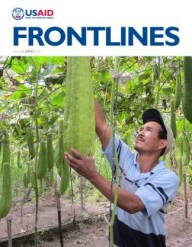


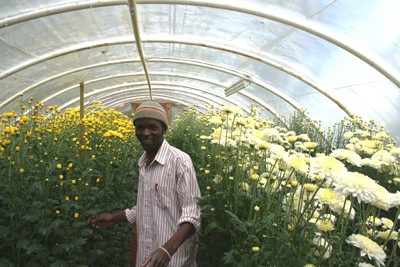
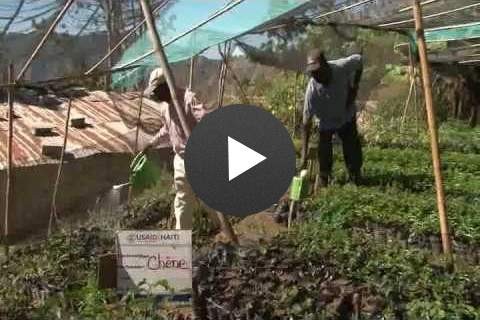
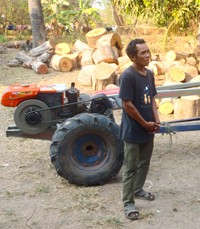

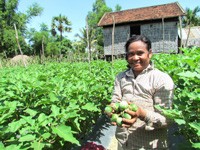
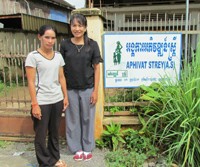
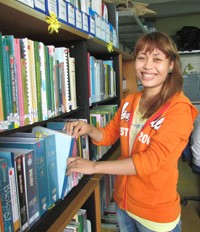
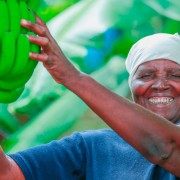
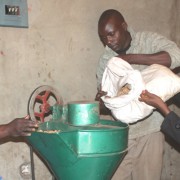
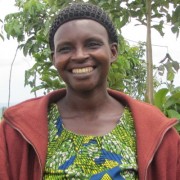
Comment
Make a general inquiry or suggest an improvement.